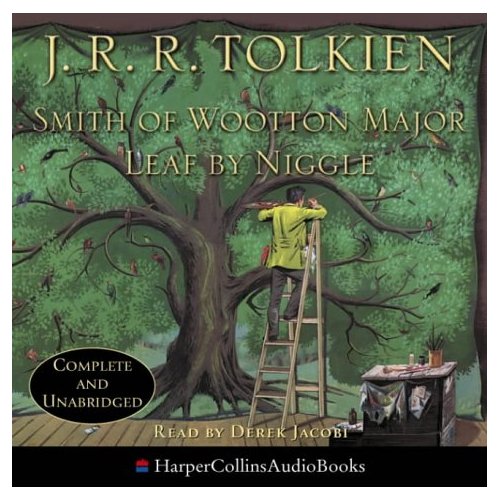Leaf by Niggle and the Allegorical Impulse
--Letter to Stanley Unwin, ca. 18 March 1945
"Looking at it myself now from a distance I should say that, in addition to my tree-love, ... it arose from my own preoccupation with the Lord of the Rings, the knowledge that it would be finished in great detail or not at all, and fear (near certainty) that it would be 'not at all.' The war had arisen to darken all horizons. But no such analysis are a complete explanation of a short story."
--Letter to Caroline Everett, 24 June 1957
"It is not really or properly an 'allegory' so much as 'mythical'. For Niggle is meant to be a real mixed-quality person and not an 'allegory' of any single vice or virtue. Of course some elements are explicable in biographical terms (so obsessively interesting to modern critics that they often value a piece of 'literature' solely in so far as it reveals the author, and especially if that is in a discreditable light.)"
--Letter Jane Neave, 8-9 September 1962
Tom Shippey has argued in J.R.R. Tolkien Author of the Century that Leaf by Niggle is really best understood as an allegory of Tolkien's own "niggling" impulse, a scholar who revises too much to publish much of his work, a writer who revises so much his work was almost not published and which generated the massive legendarium of the History of Middle-Earth. Shippey argues that Niggle and Parish represent two sides of Tolkien--the writer and scholar versus the practical person of daily life, bound by academic and familial duties.
Tolkien himself seems to both admit to an autobiographical and allegorical reading of the story only to dismiss it, stressing it is more a mythical work.
Discussion Questions
- How necessary is a knowledge of the conditions and impulses surrounding the writing of the story necessary for interpreting it?
- Does that knowledge add to and/or take away from the story?
- Is Tolkien's element of fantasy present in the story?
- Are the elements of recovery, escape, and consolation present in the story?
- Could Leaf by Niggle be described as possessing eucatastrophe? Why or why not?
- How does the Roman Catholic doctrine of purgatory enter into the story?
Thought Experiment
Look at the cover from an audiobook version of Leaf by Niggle. Does the cover do justice to Niggle's tree? Did you imagine it differently? Are there elements of the story that do not easily translate into a visual medium despite its metaphor/symbol of painting? Why or why not?

